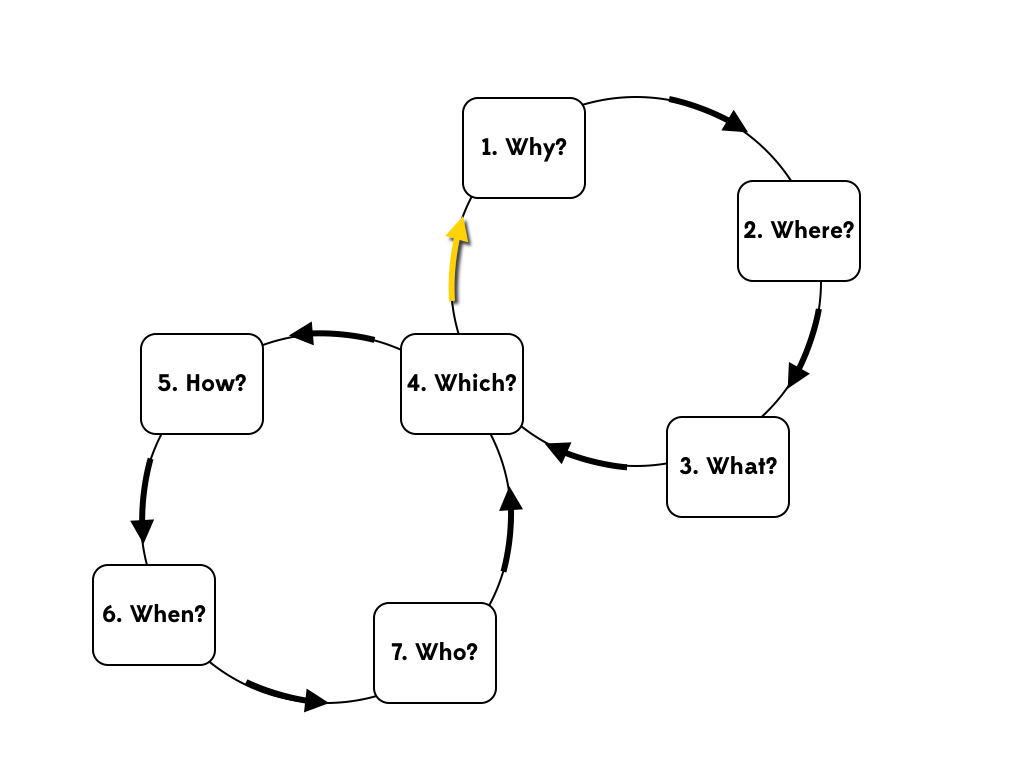Which brainstorming technique do you use to get new ideas? How do you improve your creative thinking? What do we mean by brainstorming?
What is brainstorming and why should we do it?
Brainstorming is about thinking creatively and generating new ideas to start initiatives or solve problems. Effective brainstorming encourages lateral and divergent thinking, allowing us to explore ideas beyond the expected approaches to challenges.
To achieve our life goals, we must employ some brainstorming. If we have big dreams, then we are likely to face big challenges and therefore we are going to need some creative thinking to help us achieve them.
“Until we are free to think for ourselves, our dreams are not free to unfold.” – Nancy Kline
The Swiss Army Knife approach to problem-solving
When growing up I used to love going into the woods and pretending I was in a survival situation. I would make shelters, build fires and forage for food. The more experienced I became, the more I would enjoy limiting the tools I would take with me. In some instances, I would take little more than a penknife.
One of my prized possessions was a Swiss Army Knife. As with most Swiss Army knives, mine had several built-in tools, each with a different use. The more I used this multi-tool, the more I found alternative uses for each item. For example, the large blade was good for cutting but could also be used as a small mirror. The flat screwdriver head could be used for screws (not that there were many in the woods) but was also very handy for prying bark off trees. The small saw blade could be used for sawing through branches but could also be used as a scraper to create wood shavings or even as a sort of grater for food.
Having only one tool, even a multi-tool, forced me to think of novel ways to solve problems. I not only started to look at the penknife in a new way, but I also looked at the challenges in a new light. My brain was more open to finding new ways to approach each issue.
Free Personal Leadership Action Plan
Just sign up here to receive your free copy
How to brainstorm ideas: The Right Questions Multi-tool
And that is the power of creative thinking. By forcing our brains to think divergently or laterally about something we can come up with new ways, and often multiple ideas, for tackling a problem.
The idea of The Right Questions Multi-Tool is to use forced association (or forced connections) as a creative thinking technique. These are approaches that I first came across from Edward de Bono, author of Lateral Thinking, and have proven useful on many occasions, both in my work and personal life.
Here are three of my preferred approaches to brainstorm ideas, options, and solutions:
Forced number association
Forced number association helps generative thinking by giving the brain a target number of ideas to create. For example, using the Rule of 3, you can give yourself a goal of creating three different options to achieve your aim. This is a common approach when developing courses of action for achieving your goal, a subject we will return to with The Right Questions Guidebook tool.
When brainstorming you can give yourself a larger number. Ten or twenty is a manageable number which will also create a good number of divergent options. Therefore, for this technique just follow these steps:
- Pick a target number for your ideas (10-20 is recommended)
- Now brainstorm ideas until you have hit your target number, recording them as the thoughts emerge.
Handy hint: I often like to use Post-its for this sort of exercise and put them onto a wall or flipchart. In this way, you can play around with how you arrange the words which can lead to new connections, insights and ideas.
Forced word association
Forced word association uses random words, that are generally un-associated with the issue at hand, to force you to think laterally. As with the number association technique, you might want to set yourself a target number of ideas and then follow these steps:
- Select a word at random. This can be done by opening a dictionary at random, having random words written on slips of paper you can pull out of a hat, or using an online word generator. There are web options you can use for free such as https://randomwordgenerator.com
- Consider how the random word could help address the issue you are thinking about. This might not be easy, and the answer might seem to be crazy but don’t worry, the idea here is creativity.
Leadership Development: Master the Top Leadership and Life Skills
Better lead in life and work to maximise your success. Sign up and access materials for free!
Word Association Worked example 1:
For example, your goal might be to run a marathon and the random word could be ‘rose’. A rose could be a colour, a flavour, a flower, or the name of a person. Maybe you like roses and can reward yourself with some for achieving a run. Perhaps there is a person called Rose who can support you in some way. Maybe you could fuel yourself with rose-flavoured Turkish Delight! It might be you don’t use any of these ideas in the end but forcing the brain to make new connections will help you to look at the challenge from new perspectives.
Word Association Worked example 2:
Another example could be to consider what to do in the holidays. I used randomwordgenerator.com to give me a random word and it gave me ‘morning’. By thinking of the word ‘morning’ along with the idea of ‘vacation’ my brain starts to prompt questions such as what do I like to do in the morning? Where would I like to wake up in the morning? What would the perfect morning look like?
I am also flooded with pictures and memories; the sun coming up over a mountain as my feet crunch through frost-crusted snow, the smell of great coffee in an Italian café, the snuggly feeling of waking up in fresh hotel linen (knowing that I don’t have an alarm forcing me to get up). Suddenly I am full of ideas of things I want to do! And that is just one word and a few seconds of thinking.
“It is better to have enough ideas for some of them to be wrong, than to be always right by having no ideas at all” – Edward de Bono
Forced picture connections
The forced picture association method is the same as forced word association, except, as the title suggests, you use pictures instead of words. You can use magazines, photo albums or books for your pictures or free online resources such as https://randompicturegenerator.com. Just follow the same steps as used for the word association.
Expert tip: combine all three techniques by setting yourself a target number and then using a mixture of words and pictures for inspiration. Place them all on a large surface and experiment with their placement. Get some friends involved with the process to improve the diversity of thought in the creative process.
“Creativity involves breaking out of established patterns in order to look at things in a different way.” – Edward de Bono
Making creative thinking a habit
The best way to become more creative is to experiment with these and other techniques. We can improve our ability to think of ideas if we practice so why not start now? Pick a goal you want to achieve or a challenge that you need to overcome and apply one or more of the exercises above. Once you have tried a technique, even just for a few minutes, you are much more likely to use such a tool again and develop better thinking habits.
As well as brainstorming with lateral thinking techniques, the other tool I often use is Mind-maps. You can find out more about mind mapping in my article on What is Mind Mapping and Why Should I Use Mind Maps?
“To find yourself, think for yourself” – Socrates


